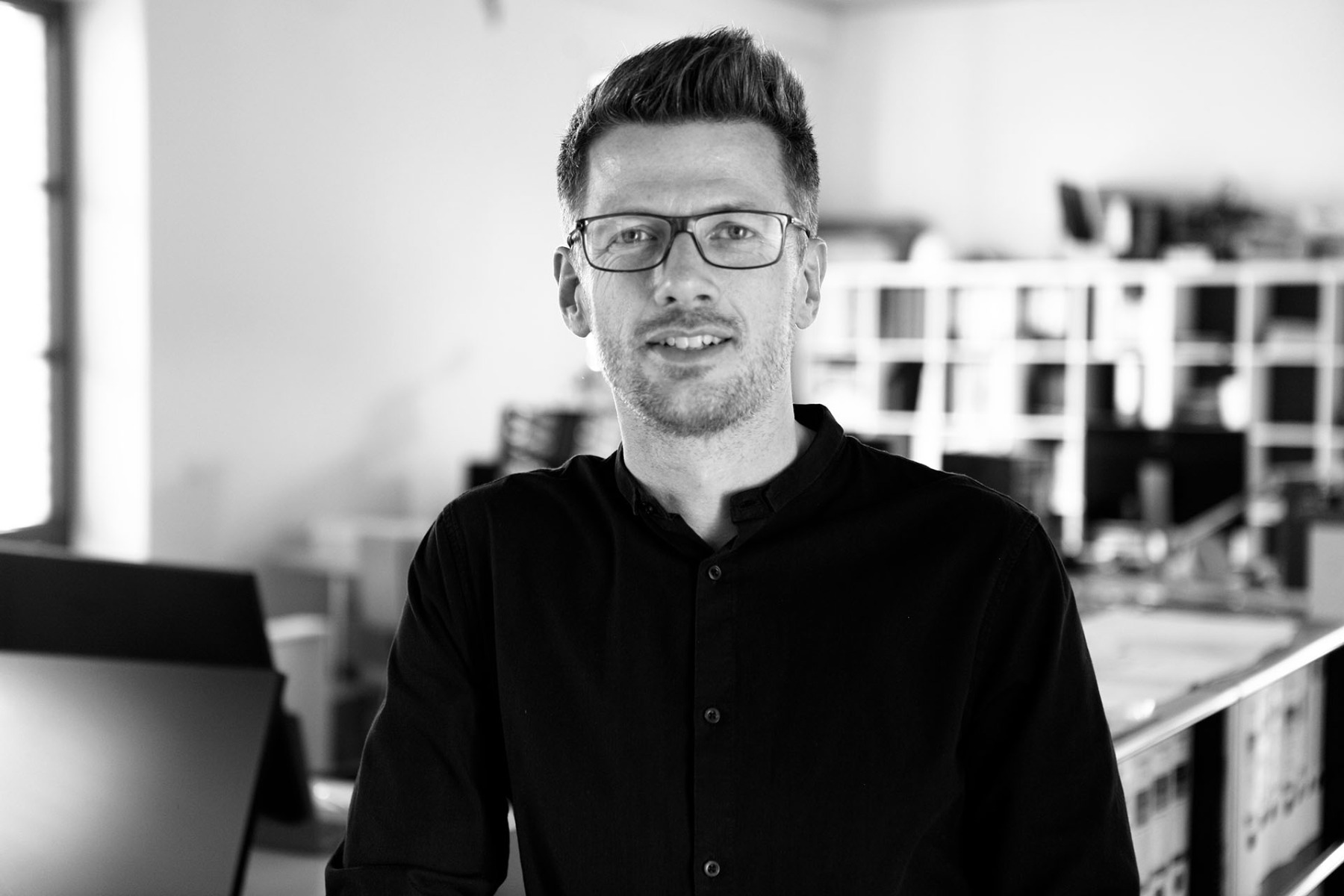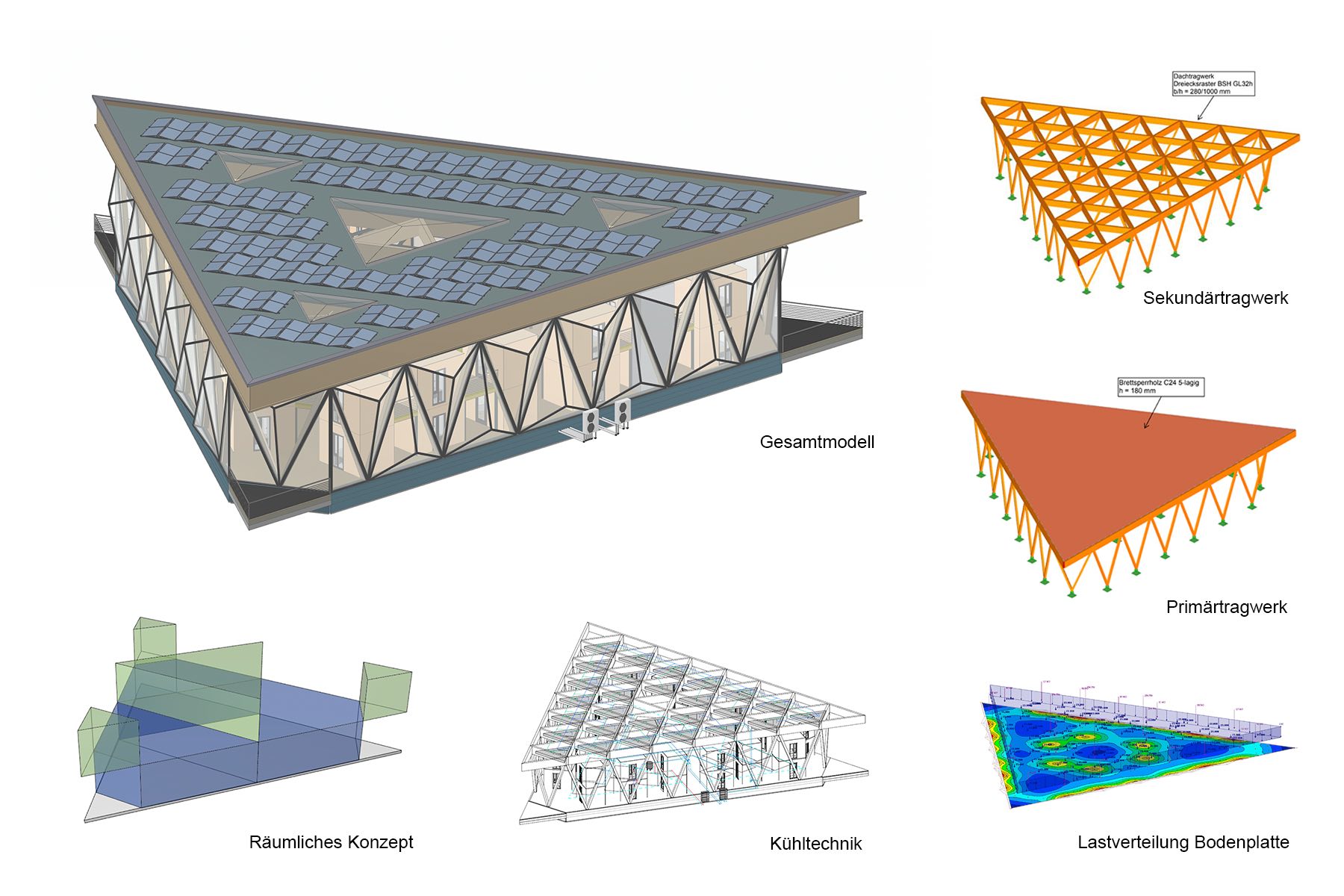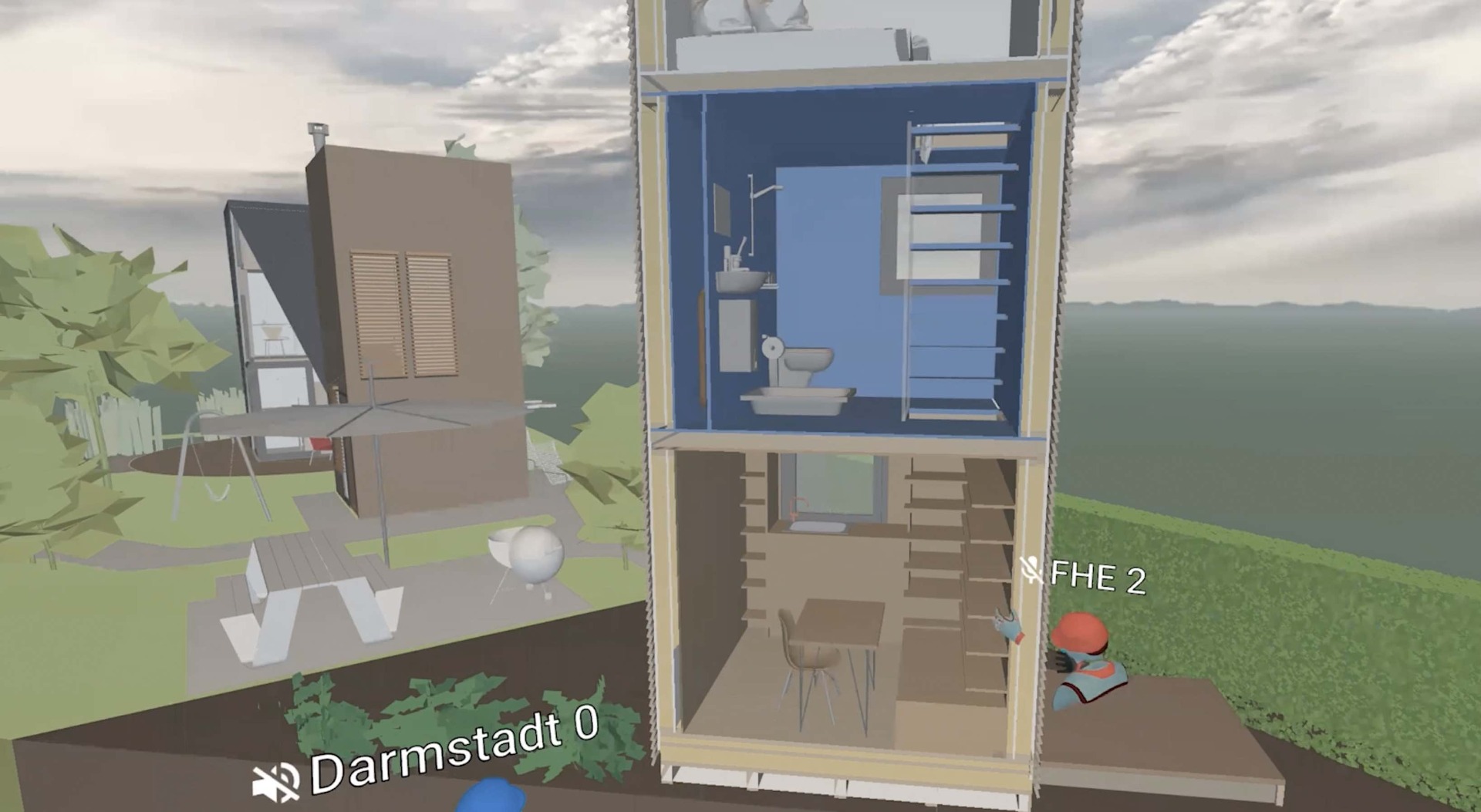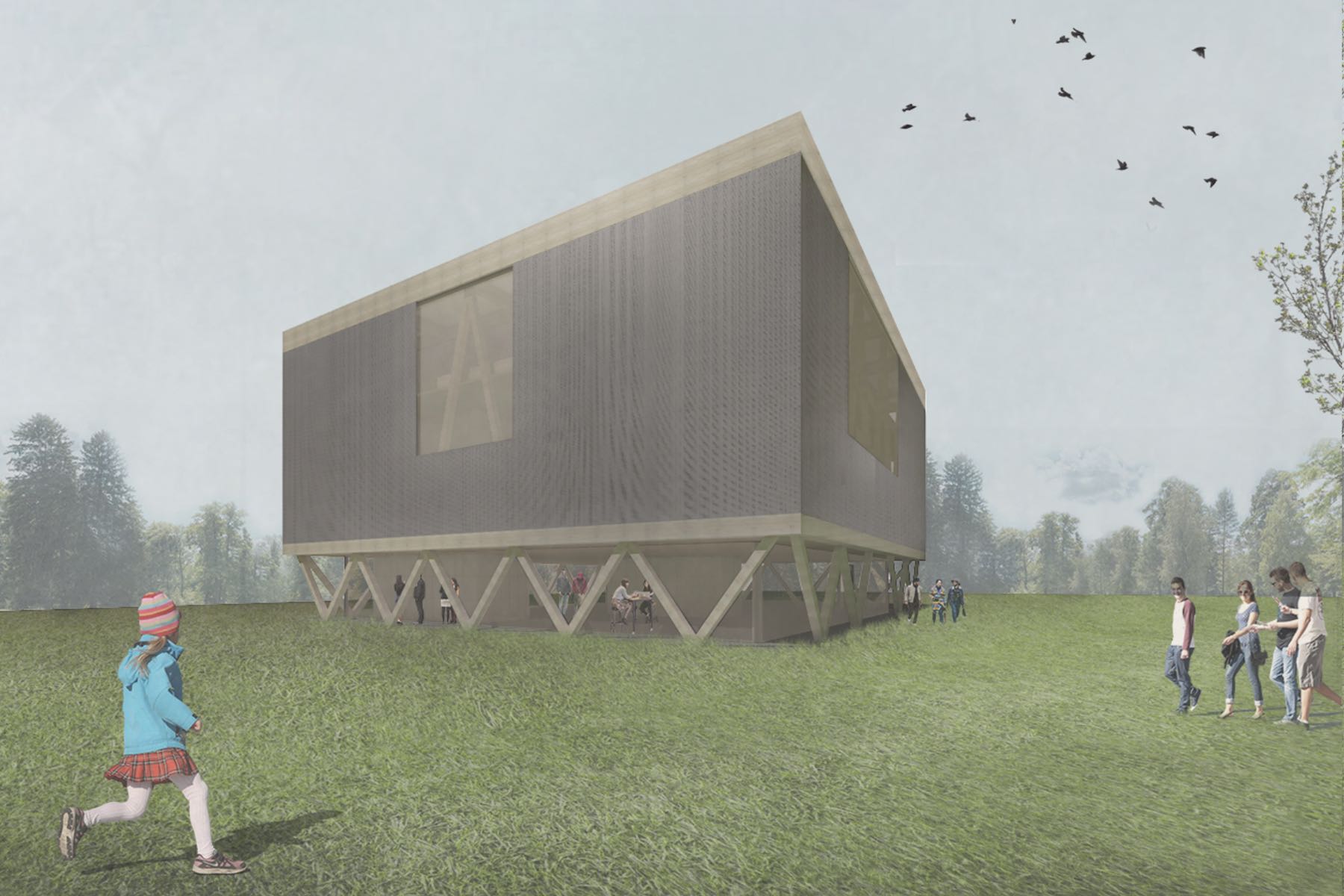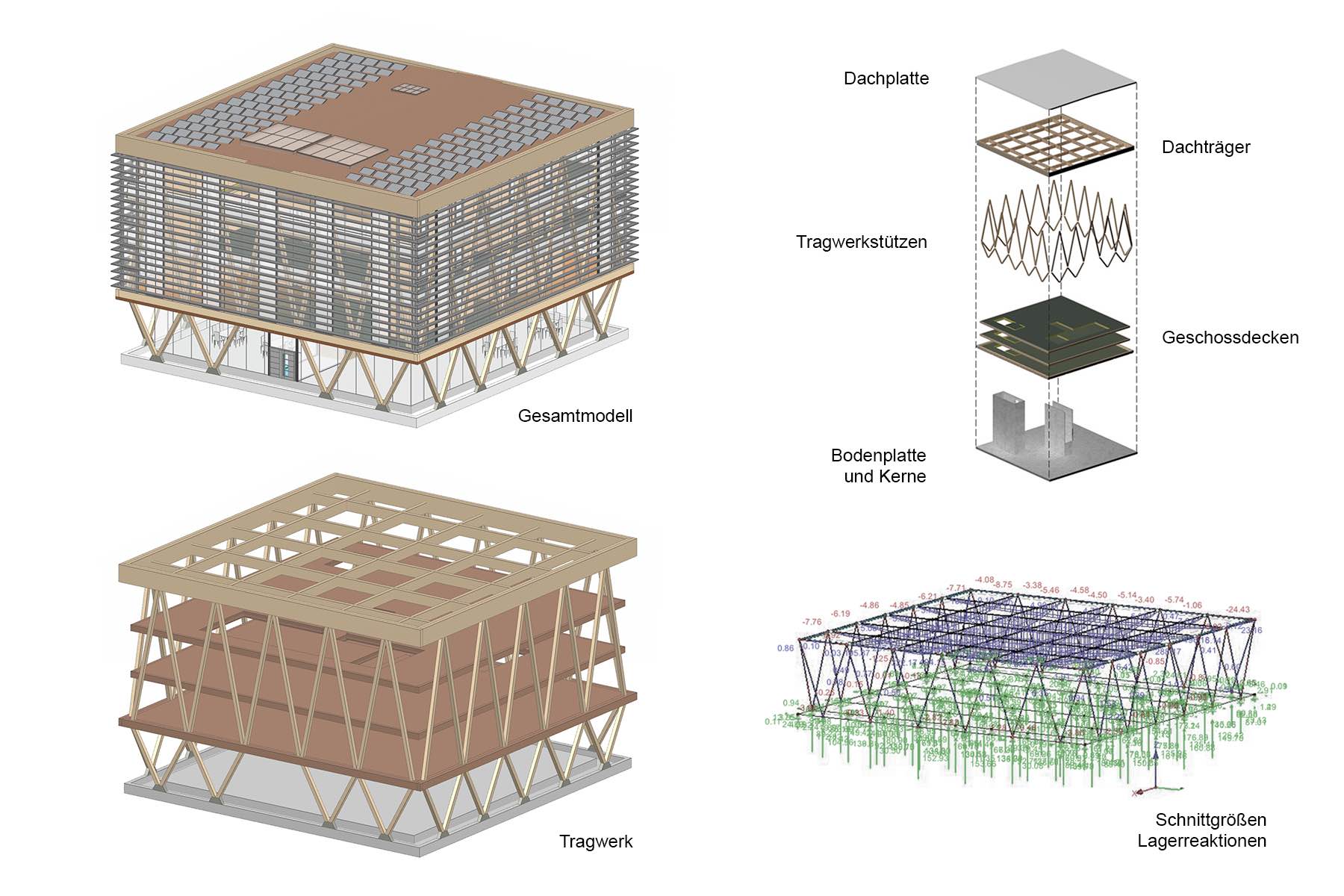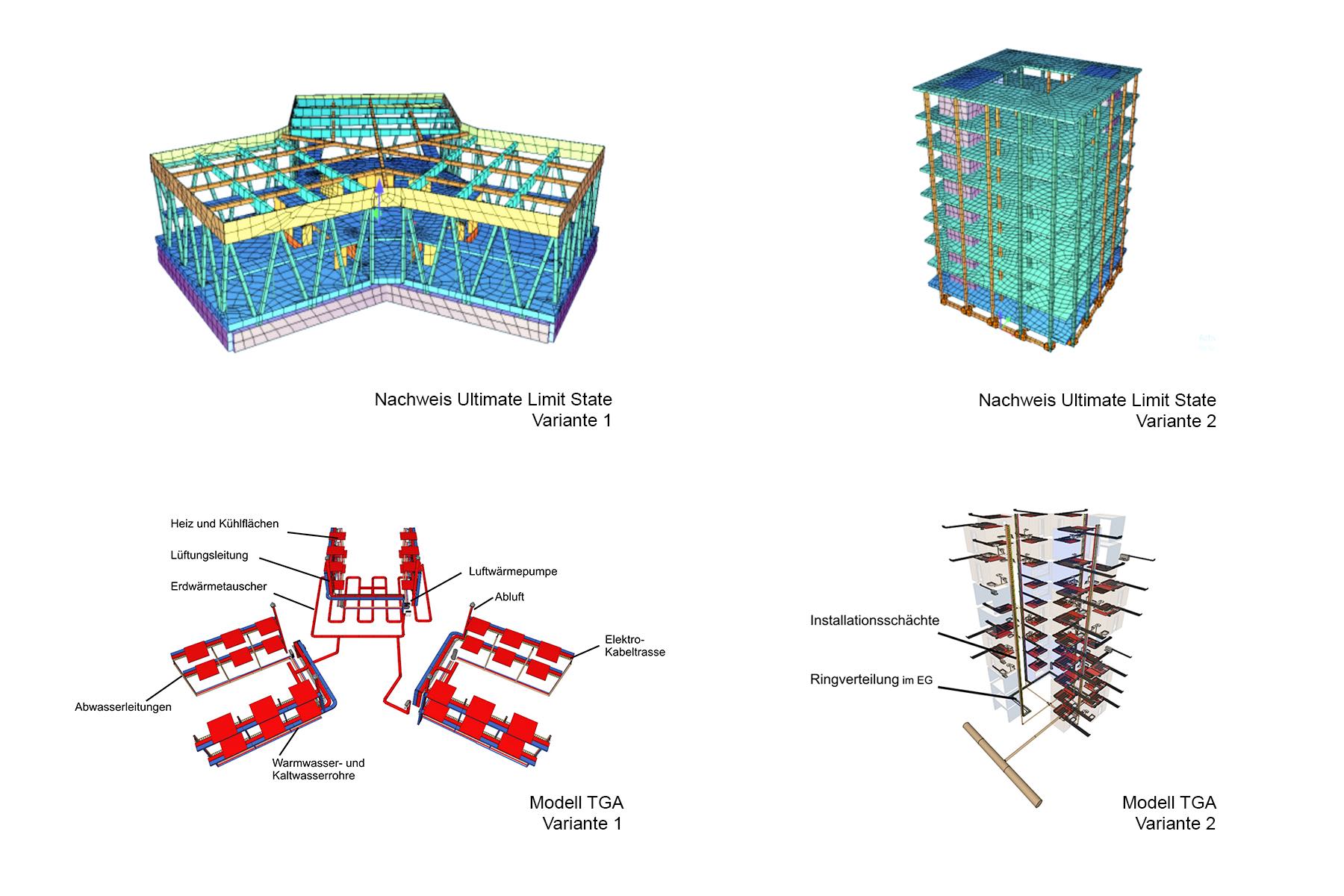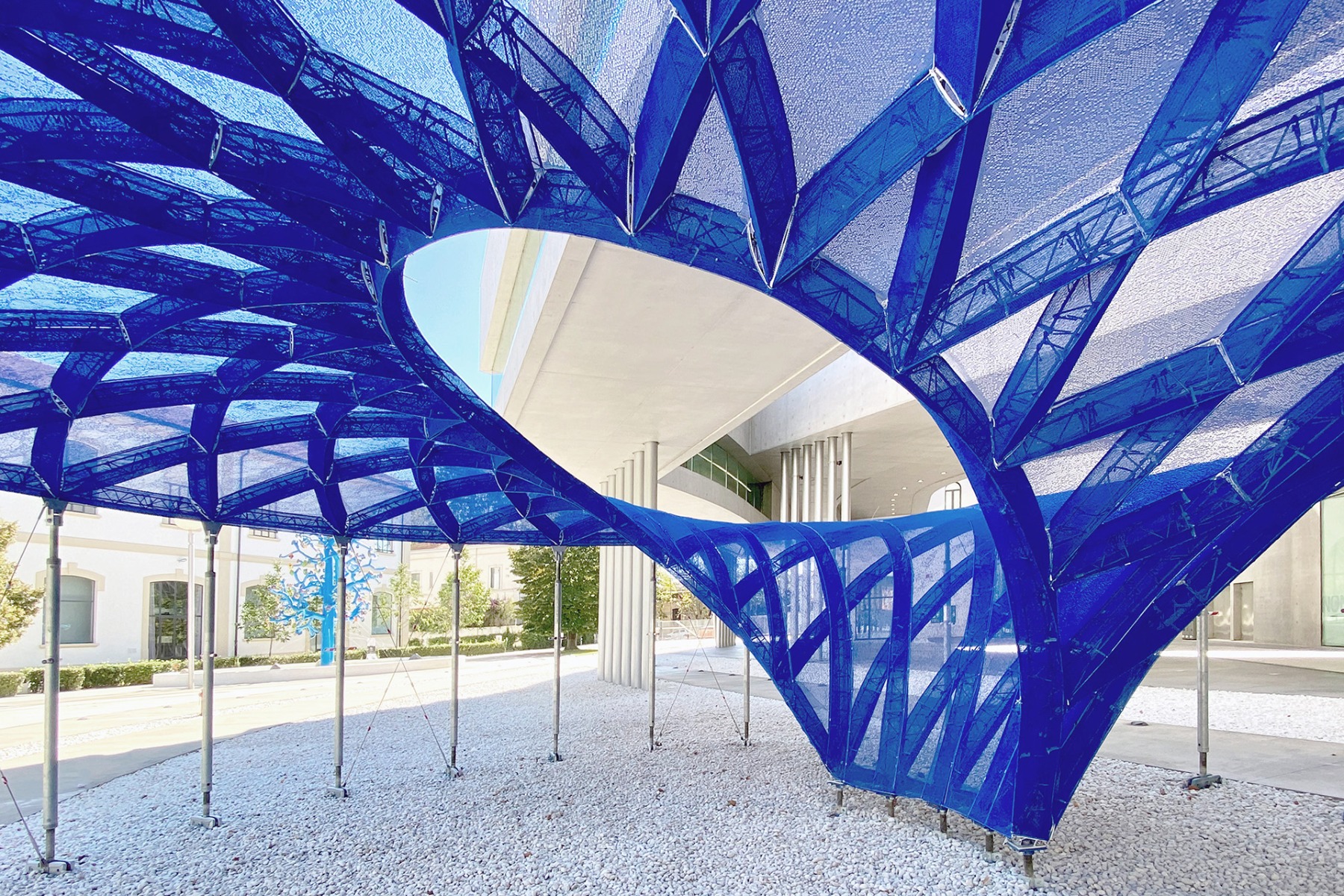BIM in teaching
The Workaround as Principle

Andreas Pilot, © TU Darmstadt
Digital models are perfectly suited to fact-based design decisions and interdisciplinary collaboration. These processes must leave room for creativity as well. In fact, Andreas Pilot from TU Darmstadt says that in many instances, the improvisational spirit is essential.


Integral concepts, © CUBITYdigital - interdisciplinary BIM project by Moritz Baur, Pascal Deutzer, Eric Klingebiel, Yunqing Luo,
Edgard Rudenko and Rebecca Stein at the TU Darmstadt
In 2019, you developed the Building Information Modeling Studio in the Design and Building Technology program at TU Darmstadt. What was your objective?
For us, it’s all about ensuring the competency of future generations of architects and representatives of related engineering disciplines for digital collaboration. It’s important to integrate BIM as a regular component of teaching and research, and to anchor it in interdisciplinary projects.
In your studio, how do you include BIM when you teach architecture? Do you teach students how to use specific programs? Do you offer your own designs that must subsequently be planned using BIM? What are the design discussions like?
We’ve established courses in which 3D models are not only part of the output, but are also used while working on projects. For instance, this means that individual ideas can be conveyed better in interdisciplinary planning meetings and that models form the foundation for comparing variants when it comes to sustainability criteria or spatial efficiency.


Exterior perspective, © Brückenschlag - Neubeginn an der Ahr - Interdisciplinary design with BIM by Gentijana Kurtishi,
Max Niemert, Julia Pauly and Berkan Yirik at the TU Darmstadt
As our technical and methodical concepts are based on openBIM, the students are free to choose an openBIM-enabled authoring system. For collaborative work, we make both the common data environment and a virtual-reality environment available. Meetings, presentations and virtual tours in virtual reality are always based on the latest 3D models. Plans are explicitly not required in the assignments for our BIM seminars.


VR inspection, © BIM ganz praktisch - interdisciplinary BIM project by Yven Herbst, Helen O'Gorman, Juri Reklin and Henri Schneider as "studio heyhej" at the TU Darmstadt and
the University of Applied Sciences Erfurt
How can the sketchy, imprecise nature of design ideas be captured sooner with digital tools?
At this time, digital tools offer hardly any possibility for working with approximate measurements. However, many architectural ideas and conceptual approaches come alive because they do not demand precision, at least at first. The resurrection of the debate surrounding fuzzy logic will be an important development in this case. With fuzzy logic, systems can process details that are inexact, such as “a little”, “rather” or “very”. Future implementation in digital methods and tools will be quite interesting.


Exterior perspective, © CUBITYdigital - interdisciplinary BIM project by Stefan Bingert, Yannis Fandel, Maximilian Gehring, Uday Kamel, Moritz Lüpke, Harun Popal and Jingyi Zhang
at the TU Darmstadt
To take a practical view, in the BIM studio we integrate the imprecise into our teaching methods a priori: in interdisciplinary projects, we pay particular attention to the interplay of the precision-based engineering disciplines with the inexact concepts of early project stages. Moreover, we work with estimates, variants and scenarios. Often, these can be depicted in the programs only by using workarounds. This is something the students learn when they work on their projects with BIM.


Model-based structural concept, © CUBITYdigital - interdisciplinary BIM project by Stefan Bingert, Yannis Fandel, Maximilian Gehring, Uday Kamel, Moritz Lüpke, Harun Popal
and Jingyi Zhang at the TU Darmstadt
What obstacles – technical as well as mental – do you encounter when you teach with BIM? Where do things not go as well as you would like?
Students often model in 3D, but up to now these models have seldom been understood as digital prototypes. This represents a paradigm shift that is clearing the path for many questions that develop from it. In practice, we constantly come up against the technical limits of the applications. Although architecture and building informatics have been developing solutions for years, users have hardly employed them or made the most of them. In particular, interdisciplinary workflows have not developed much further. For example, there is still no modelling tool that completely exploits the possibilities of the openBIM file format IFC 2x3, which has been around since 2008.


Integral Concepts for Structures and Technical Building Equipment, © CUBITYdigital - interdisciplinary BIM project by Lia Birmele, Mayur Gohel, Til Sommer, Fabian Weinhart,
Glenn Yacoub and Mingchen Xing at the TU Darmstadt
But luckily, a lot has happened in this area over the past few years. In our lectures, we respond to this shortcoming by raising workarounds to a principle and establishing a seldom-seen culture of error. Both of these methods are important fundamentals for good interdisciplinary cooperation. We see that the image of the profession of architect is currently undergoing radical transformation from the solitary universal genius with decades of all-encompassing experience to the idea of true team performance in design and planning. To this end, openBIM certainly offers an excellent technical and methodical basis.


VR tour, © Brückenschlag - Neubeginn an der Ahr - Interdisciplinary design with BIM by Gentijana Kurtishi, Max Niemert, Julia Pauly and Berkan Yirik at TU Darmstadt
Welche technischen Neuerungen rund um die digitale Planung halten Sie für besonders interessant, sowohl im Hinblick auf die Lehre als auch für die Büropraxis?
Green BIM als kombinierte Methode aus Dekarbonisierung und Digitalisierung ist aktuell ein hoch diskutiertes Thema. Dazu werden wir in naher Zukunft auch funktionierende technische und modellbasierte Lösungen sehen. In Lehre und Forschung diskutieren wir das Thema schon länger. Doch jetzt wird es bald auch in der Praxis unverzichtbar werden, wenn man beispielsweise Förderkriterien für Bauprojekte erfüllen will. Wesentlich für die breite Anwendung von BIM ist derzeit die Standardisierung interdisziplinärer Prozesse – sowohl methodisch als auch in der technischen Umsetzung. Dazu lohnt sich beispielsweise ein Blick in die Richtlinie VDI 2552 Blatt 11.2. Sie beschreibt die vollständig modellbasierte Zusammenarbeit bei der Schlitz- und Durchbruchsplanung. Das heißt: Niemand muss die entsprechenden Prozesse und Standards für die eigenen Projekte nun noch neu entwickeln. Persönlich sehe ich bei den Entwicklungen rund um Virtual und Augmented Reality enorme Potenziale sowohl in der Lehre als auch in der Praxis. Sie ermöglichen einen niederschwelligen Zugang zur modellbasierten, interdisziplinären Zusammenarbeit. Gleichzeitig machen sie die Planung und Kollaboration immersiv und sinnlich erlebbar.
Andreas Pilot is an architect, IT entrepreneur and BIM manager. Since 2019, he has been director of the BIM studio at the Technical University of Darmstadt, where he concentrates on teaching and researching model-based and interdisciplinary methods.
XXX: X
YYY: Y
ZZZ: Z
AAA: A



